Architects: Showcase your next project through Architizer and sign up for our inspirational newsletter.
“This is the beginning of the timber age.”
Andrew Waugh, head of the UK firm Waugh Thistleton, made this statement in 2015 upon the opening of his firm’s Dalston Lane Housing Development, which is still the world’s largest Cross Laminated Timber building. Waugh’s point is well taken: the past several years have seen an explosion of innovative timber construction, thanks in part to advances in engineered wood technologies such as glulam and crosslam.
And yet, hasn’t it always been the timber age? As William Hall points out in the introduction to Wood. Phaidon’s gorgeous new compendium of timber buildings, even Le Corbusier spent his summers in a log cabin, a simple structure measuring just 12 square feet. “I have a castle on the Riviera,” he boasted, “an extravagant place of comfort and kindness.” Le Corbusier may have been architecture’s greatest exponent of concrete and steel, but he turned to wood when he sought familiarity and warmth.
Something about wood makes people feel at home. Unlike concrete or brick – the materials featured in Phaidon’s previous two books on building materials – wood is an organic substance that ties buildings to the natural world. It is also deeply ancient. Archeologists in Northumberland have found evidence of timber construction dating to 8,500 BC, a time when Britain was still attached to mainland Europe.
But the appeal of wood is not just aesthetic or emotional. Wood is a sustainable, renewable material, and thanks to modern technology, timber buildings are rising higher and lasting longer than ever before. What follows are highlights from Phaidon’s collection that illustrate how architects are using wood façades to add texture and personality to their projects.

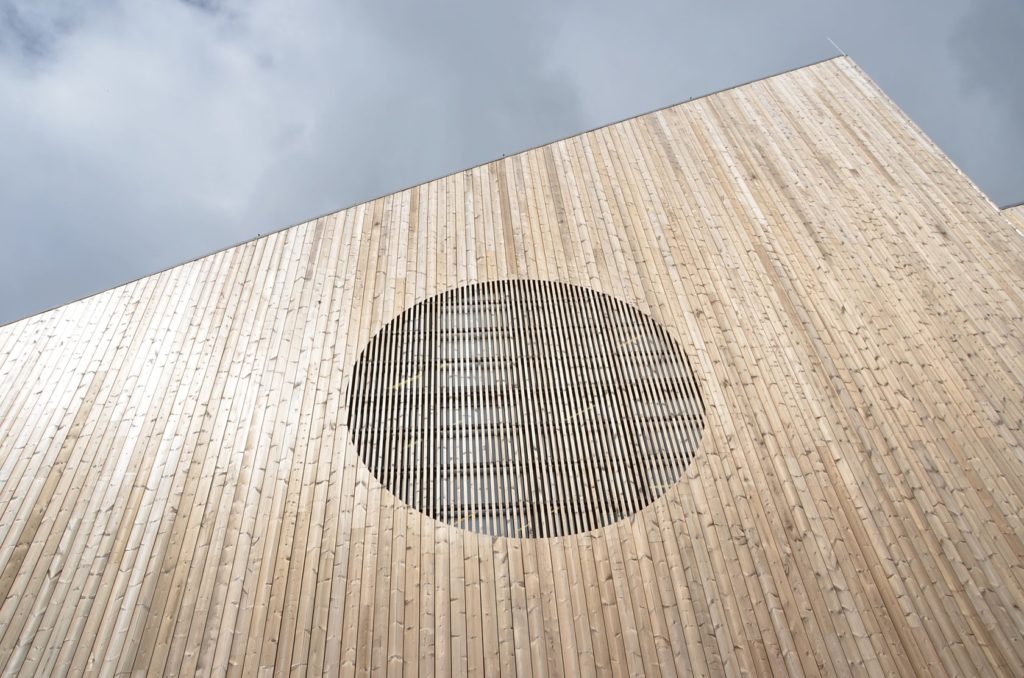
1. Mottled Pine Heartwood
Knarvik Community Church by Reiulf Ramstad Arkitekter, Knarvik, Norway, 2014
The unfolding form of this church is reminiscent of an origami crane, and like a crane it possesses an awkward dignity, looming imperially over the surrounding village. Situated on the edge of the Norwegian wilderness, this angular structure would clash with its vernal surroundings if clad in concrete or steel. It is drawn into its context by means of a mottled pine heartwood façade. As explained in Wood, heartwood “is wood from the centre of a branch or trunk; once fully formed it dies, while the outer sapwood continues to grow. Heartwood has less moisture, is darker than the surrounding wood, and can be significantly stronger.”
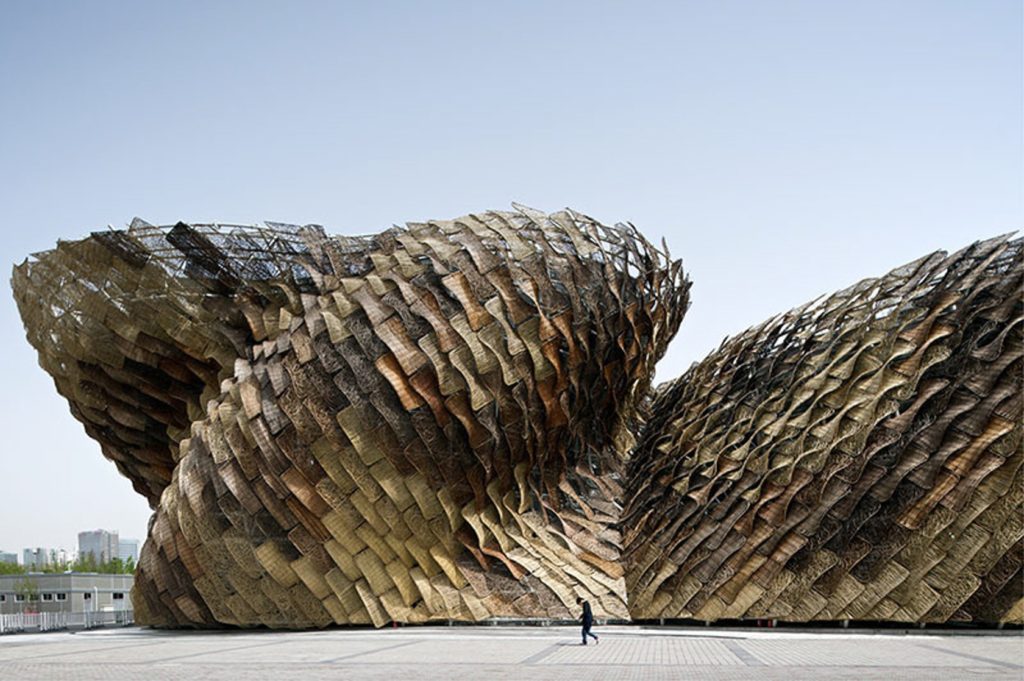

2. Woven Wicker Panels
Spain Pavilion at Shanghai Expo by Miralles Tagliabue (EMBT), Shanghai, China, 2010
The panels for this pavilion expo were designed in Spain by the architect Benedetta Tagliabue but manufactured in China, drawing together the craftsman traditions of both countries. They lend the ballooning, extraterrestrial structure an earthy, handmade quality. While there is certainly a juxtaposition between form and materials here, they don’t seem to clash.
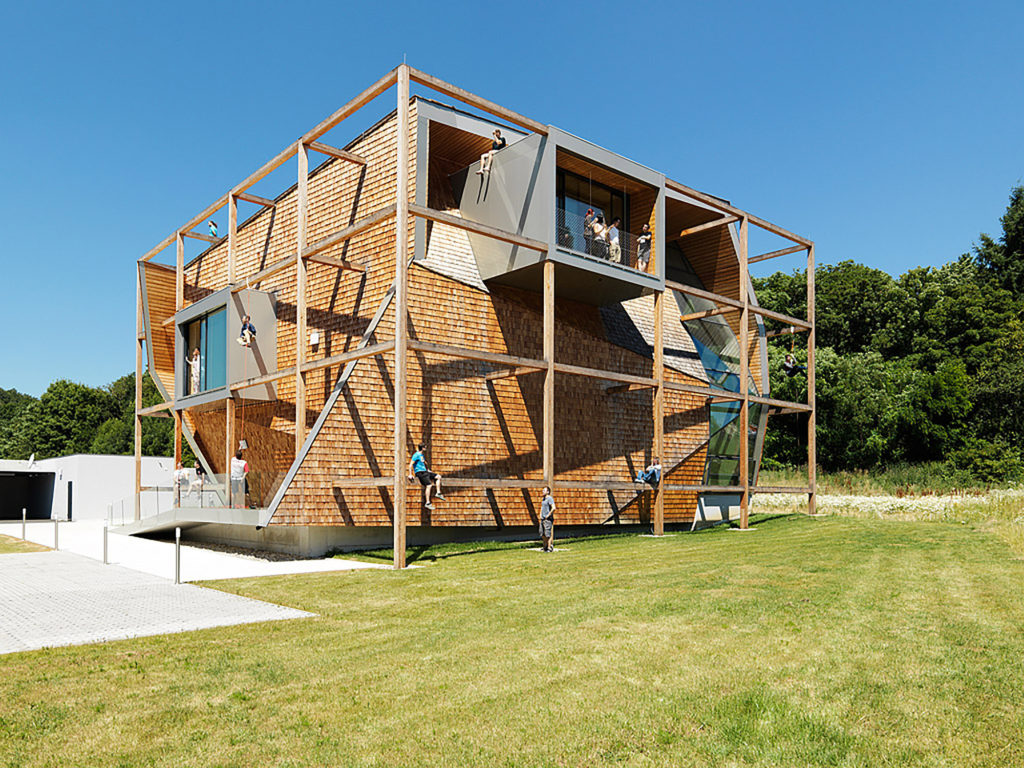
Via Arch Daily
3. Jungle Gym Scaffold
Office Off by herri & salli, Burgenland, Austria, 2013
This playful structure is the headquarters of a cladding company. The external scaffold is specially designed to allow employees to climb and play. This could be a nod to every child’s favorite type of wooden architecture: the treehouse.
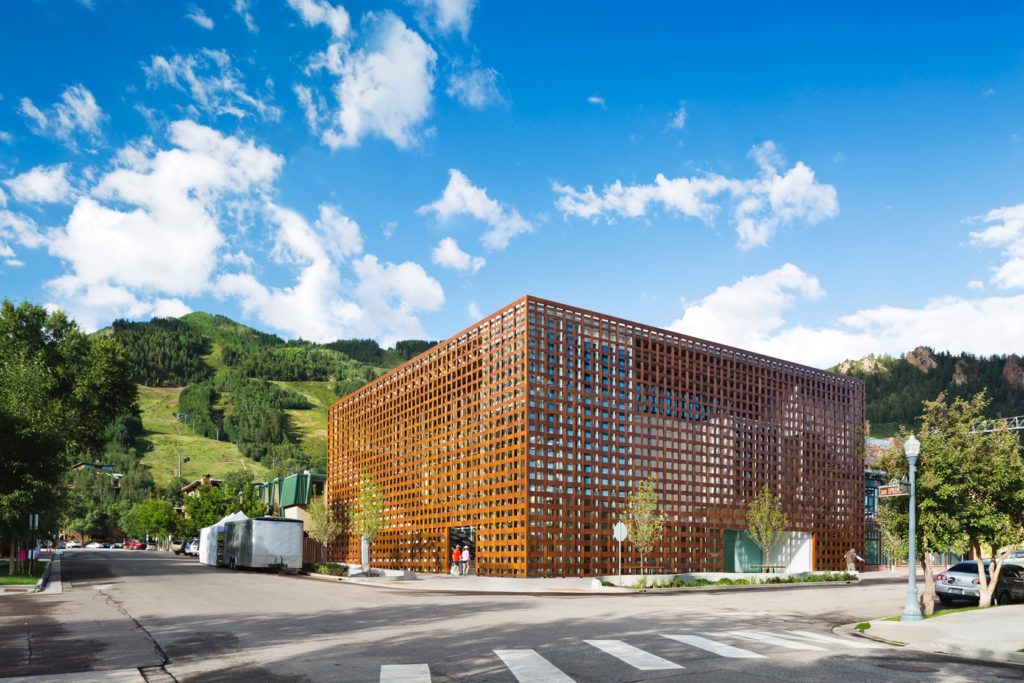
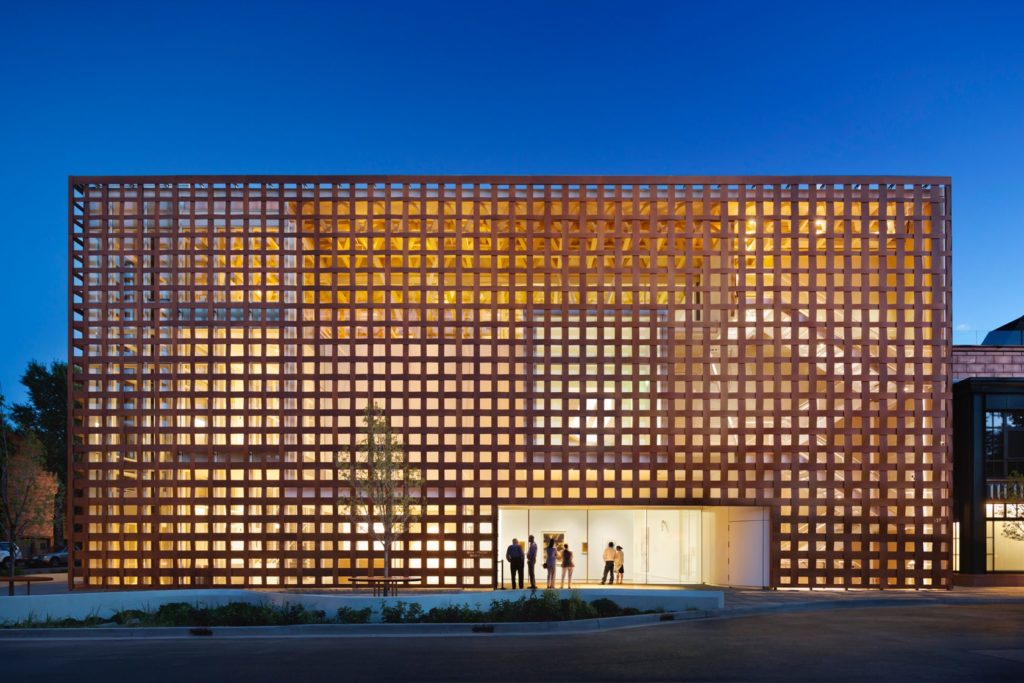
4. Woven Veneer Screen
Aspen Art Museum by Shigeru Ban, Aspen, CO, 2014
The woven screen surrounding the Aspen Art Museum serves no structural purpose, but it completely defines the building’s presence, both at street level and from the inside. The building itself was made as open and luminous as possible, following Shigeru Ban’s desire to “open the building to the outside so visitors could appreciate the beauty of Aspen from inside the building.” To this overall scheme, the semi-transparent wood screen adds a necessary sense of enclosure and warmth.

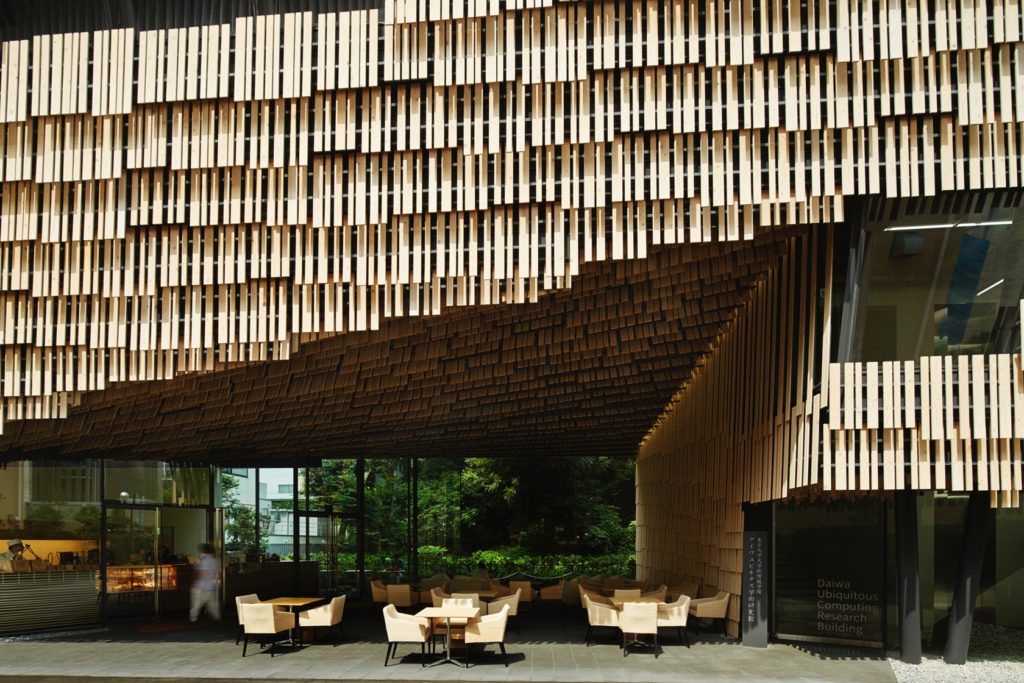
5. Timber Waterfall
Daiwa Ubiquitous Computing Research Building by Kengo Kuma & Associates, Tokyo, Japan, 2014
As noted in Wood, “Concrete, steel, and glass are the preeminent materials of much corporate and academic architecture.” For this university building, Kengo Kuma & Associates decided to break up the façade by means of a “timber waterfall” that covers all sides of the building and also hangs from the ceiling of a public underpass leading to a Japanese garden. This project shows that wood is second to none when it comes to adding texture and personality to a project with otherwise conventional specifications.
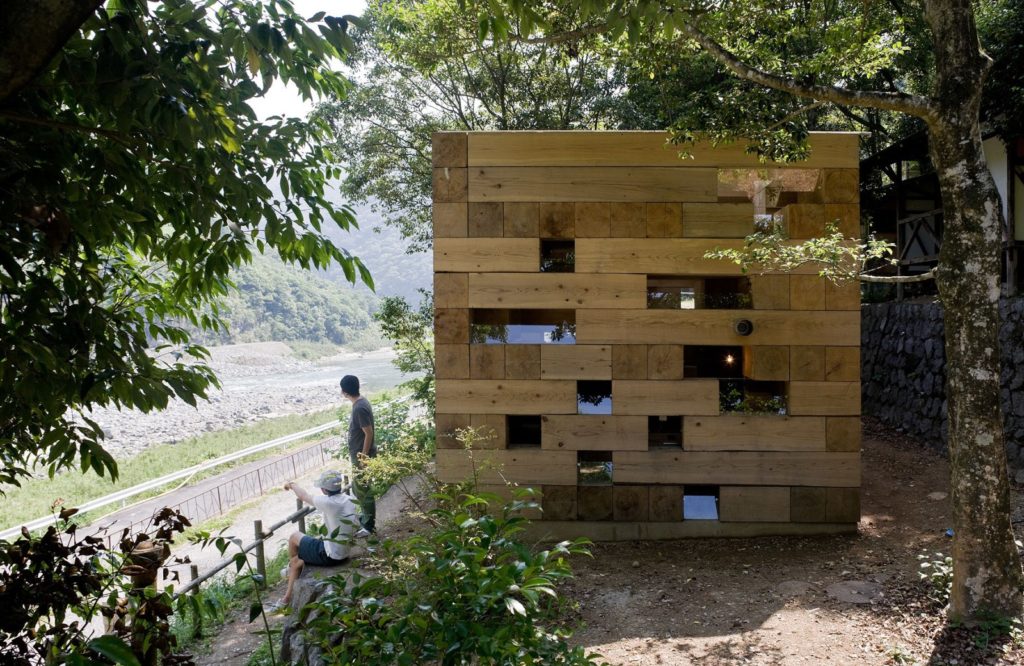
Photo © Iwan Baan
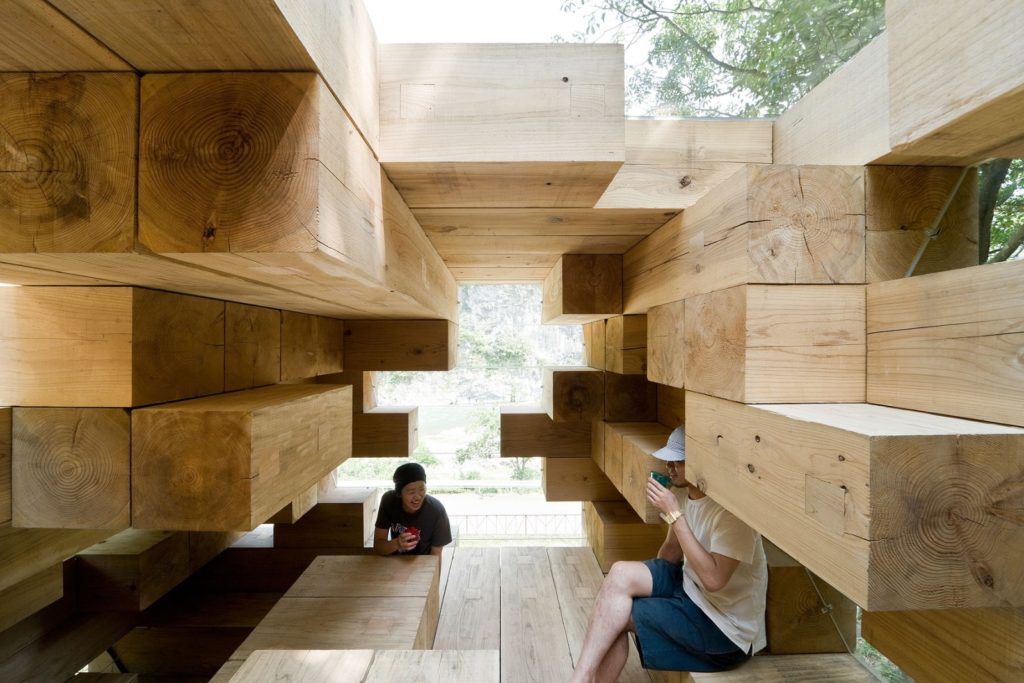
Photo © Iwan Baan
6. Building Blocks
Final Wooden House by Sou Fujimoto Architects, Kumamoto, Japan, 2006
Reminiscent of a Jenga tower, the program of this playful house is defined by the spaces and surfaces created by the interlocking timber planks. As noted in Wood, “The building observes no dissimilarity between furniture, floor, wall and ceiling, giving the entirety a compelling unity.”
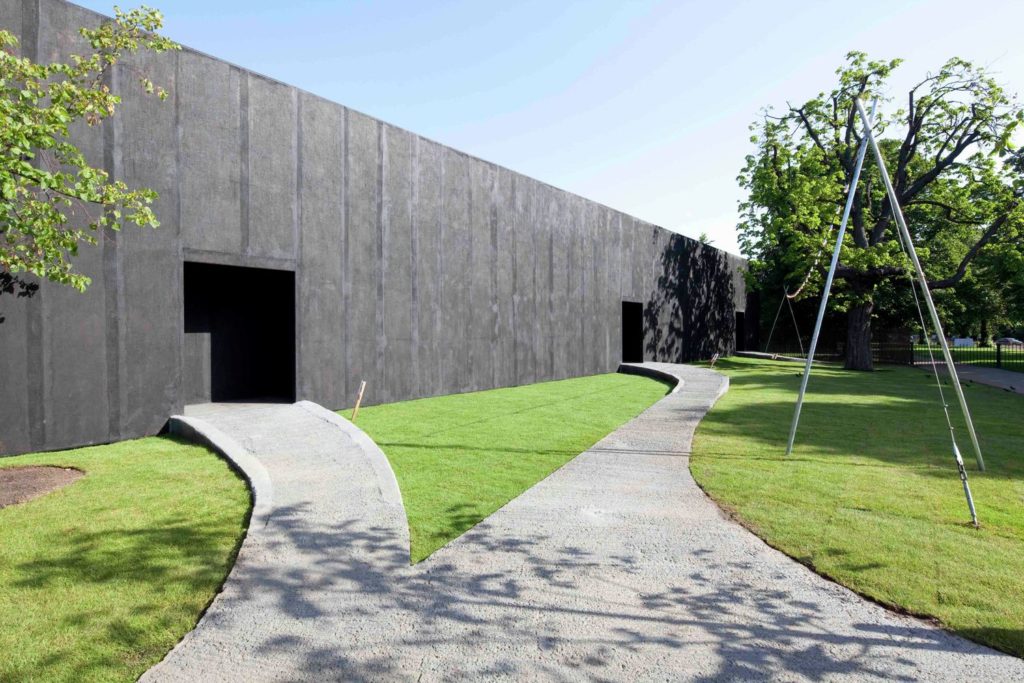

Images via Archdaily
7. Paint it Black
Serpentine Pavilion by Peter Zumthor, London, UK, 2011
Peter Zumthor’s contribution to the Serpentine Gallery’s annual summer pavilion series was a study in simplicity: an enclosed garden that, from the outside, looked like a black rectangular box. Inside, the pavilion was a picture of serenity, seemingly worlds away from the surrounding Hyde Park neighborhood. This pavilion reflects the connection between timber architecture and placidity, a relationship well-known to any admirer of Japanese tea houses.
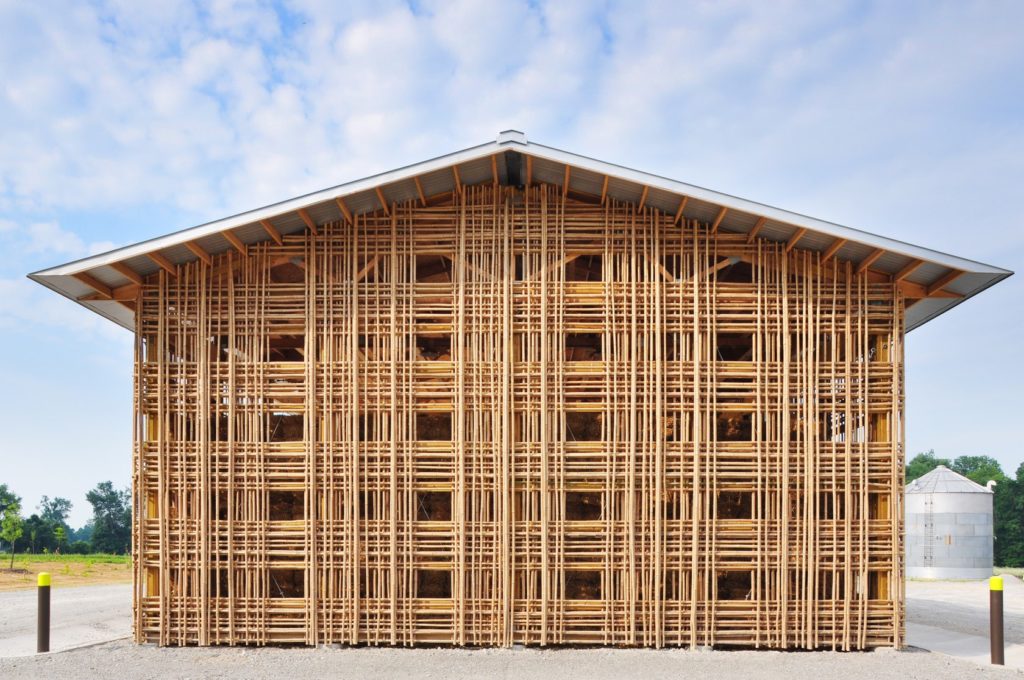
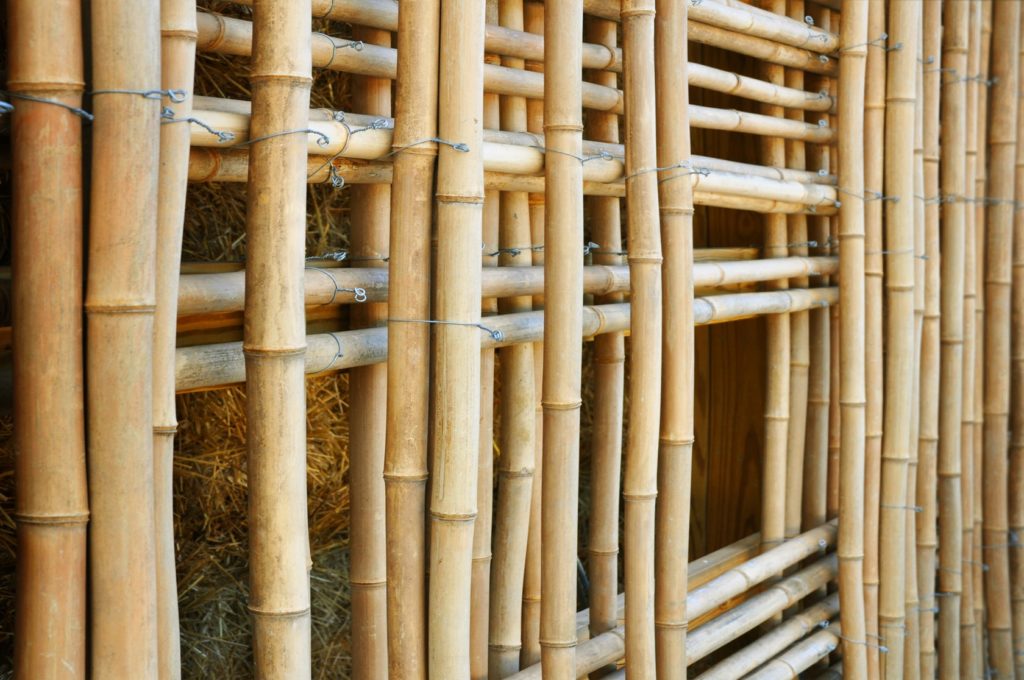
8. Latticed Bamboo
Barn B at Mason Lane Farm by De Leon & Primer Architecture Workshop, Goshen, KY, 2009
William Hall notes in the Introduction to Wood that “Modern treatments for bamboo are giving that material the longevity it previously lacked, promoting an entirely new aesthetic.” He points to Anna Heringer’s monumental Bamboo Hostel (2013) in Baoxi, China as well as the humbler but still striking Barn B in Goshen, Kentucky as examples of this trend. For the latter project, De Leon & Primmer made use of locally grown bamboo to create a latticed structure that is both beautiful and practical, providing year round ventilation to stored hay bales.
To see more of the best timber buildings from around the world, check out Phaidon’s book Wood.
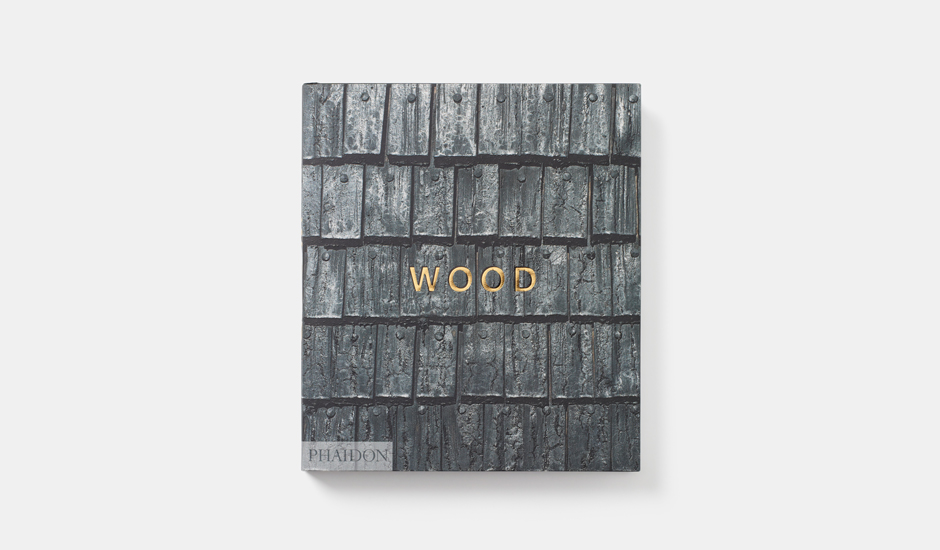
Architects: Showcase your next project through Architizer and sign up for our inspirational newsletter.






 Aspen Art Museum
Aspen Art Museum  Community Church Knarvik
Community Church Knarvik  Daiwa Ubiquitous Computing Research Building
Daiwa Ubiquitous Computing Research Building  Mason Lane Farm Operations Facility
Mason Lane Farm Operations Facility  SPANISH PAVILION FOR EXPO SHANGHAI 2010
SPANISH PAVILION FOR EXPO SHANGHAI 2010 


